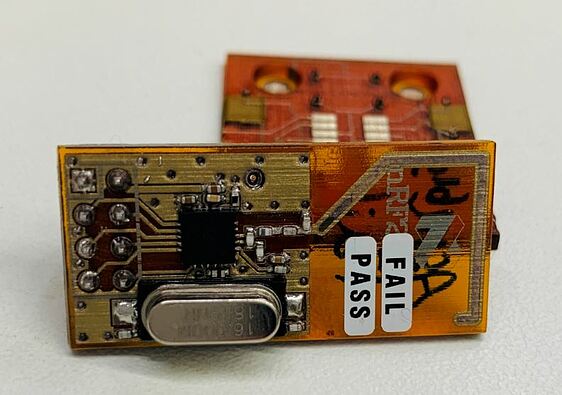Israeli company Nano Dimension Ltd has said it had created the first fully functional, 3D printed communication device, at a faster speed than has ever been achieved to date with traditionally made devices.
It said in a press release that this first ever additively manufactured (3D printed) IoT device enables companies and research institutions to create and test their ‘smart’ products and other prototypes “faster and more easily than ever before.”
Nano Dimension revealed it completed the print, assembly and testing of the prototype IoT transceiver device in approximately 18 hours, which was about 90 per cent faster than traditional (non 3D printed) devices which typically took approximately 14 days or more. The device was additively manufactured using Nano Dimension’s award winning DragonFly Pro 3D Printer – the only precision additive manufacturing system of its type worldwide.

Transceiver 3D printed with the DragonFly Pro system by Nano Dimension
The remote-control type IoT device, smaller than a silver dollar coin (16 x 33 x 1.6mm), is currently in its qualification phase and Nano Dimensions’ experts anticipate that it can easily and efficiently be developed into a two-way communication device (transmitter and receiver) such as a router.
Furthermore, this device (essentially a printed circuit board) had much farther-reaching applications than just smart homes. Enterprises that manufacture autonomous vehicles, with their many hundreds of sensors, may be able to utilize this smart device developed with the help of the DragonFly Pro.
Amit Dror, CEO of Nano Dimension, said in the statement, “An ever-greater emphasis is being placed on smart cities, smart buildings, smart homes and smart products by industries and consumers alike. Our solution enables companies to speedily trial and finalize their prototypes in just one day without compromising on quality or performance. They no longer have to wait over a fortnight to understand whether their smart device works or not. This ultimately increases product and cost efficiencies and reduces time to market, which means that the consumer can enjoy the benefits of these products faster than ever before.”
